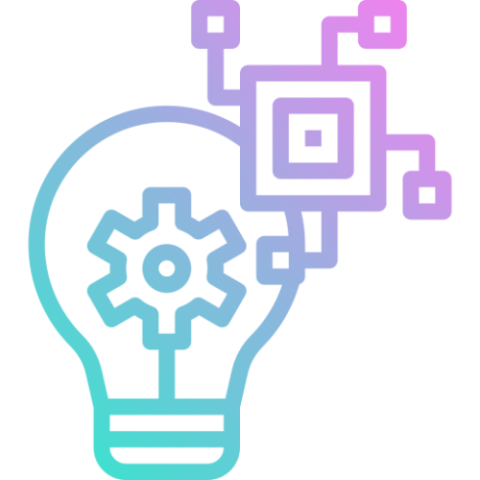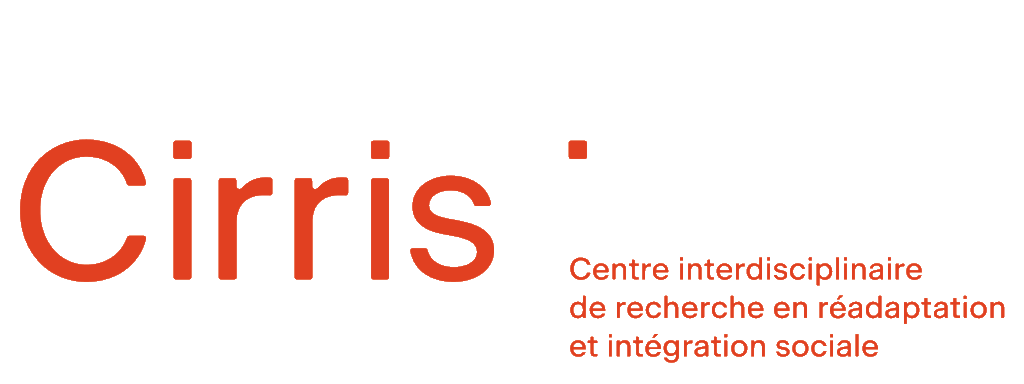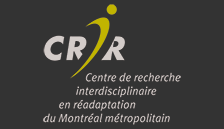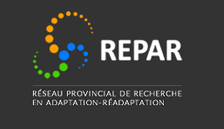Participate in a networking activity and discover 6 presentations of technological solutions in the fields of health, mobility, culture, and housing
A discussion session is planned after the presentations.
An activity organized by Société Inclusive and the strategic group INTER.
Details of the program and schedule
10:00 a.m. Welcome
Philippe Archambault, François Routhier and François Michaud
10:10 am The evolution of the SmartWheeler, the intelligent electric wheelchair
François Ferland and Dahlia Kairy
Loss of touch sensitivity and decreased motor control in the arm and hand can impact the usability of tactile interfaces, which are often used to control an Intelligent Motorized Wheelchair (IMW). In the ongoing development of our FRMI, we plan to complement the existing tactile control modality with a Brain Machine Interface (BMI), which would allow the chair’s movements to be modulated with an electroencephalogram (EEG) headset. Our preliminary out-of-chair tests concluded that it is difficult to extract a specific enough signal to directly control the FRMI with precision and accuracy. Therefore, our strategy aims at modulation rather than full control of an autonomous navigation initiated by the touch interface.
10:20 A Study on Auditory Localization Assisted by a Multi-Microphone Belt
François Grondin and Victoria Duda
In this project, a smart belt with multiple microphones and haptic motors was designed at the UdS IntRoLab to be worn by users with hearing loss. Audio localization is necessary to safely navigate in different environments, especially for people living with deafblindness. This belt locates the direction of arrival of an external sound, and can then provide haptic feedback in that direction to allow the user to direct their attention to the sound event in question. This new technology is currently being validated in the School of Audiology at UdM to objectively measure the improvement in sound localization for its users. This project aims to develop this new low-cost technology to improve accessibility for the deafblind population.
10:30 Exploring the potential contributions of MapIt to inclusive environments
Manon Guay and François Michaud
The MapIt mobile application allows users to map one or more rooms (room, bedroom, bathroom, workstation, home, classroom) and create a photorealistic 3D model. Viewable on a phone or computer, someone can move around the model and measure architectural elements, without being physically in that space. The discussion will explore the potential contributions of MapIt to minimize barriers to people’s participation
10:40 Development of an assisted feeding technology for people living with movement control disorders
Véronique Flamand, Alexandre Campeau-Lecours and François Routhier
The project consists of the development and iterative validation of an assisted feeding technology for people living with movement control disorders (e.g. spasticity, decreased coordination). Movement disorders can lead to difficulties in independent feeding. Commercial technical aids that aim to compensate for this situation either lack functionality or are very expensive. The technology developed uses advanced mechanisms to cushion and guide the person’s movements, while aiming to maintain a low cost.
10:50 Dancing with OpenTera
Lucie Beaudry, Michel Tousignant, Dominic Létourneau and Simon Brière
This presentation discusses the OpenTera software platform and what it can offer for teledance interventions in synchronous and asynchronous modes, as an example. The presentation aims to provide an overview of the developmental possibilities that the platform can offer for various types of interventions, both for specific intervention contexts and for specific research objectives.
11:00 am – Improving the perception of movement in virtual reality through proprioceptive stimulation
David Labbé and Cyril Duclos
The presentation will focus on a traditional virtual reality system, i.e. a helmet allowing visual and sound immersion in a virtual environment, completed by a proprioceptive stimulation system, which gives a perception of the movement of the limbs or the trunk. The combination of the two systems allows the user to see himself moving, but also to feel himself moving, even if he does not move. For example, the first application of the system increased the perception of walking when proprioceptive stimulation was combined with virtual reality, in healthy participants who were simply standing.
11:15-12:00 Discussion sessions on the technologies presented, in private virtual rooms.
Practical Information
- When? April 12, 2022 10am-12pm
- Where? Online, a zoom link will be sent to you before the event
- How? On registration
- For whom? People interested in partnership research (students, researchers, partners)
We look forward to meeting you!






